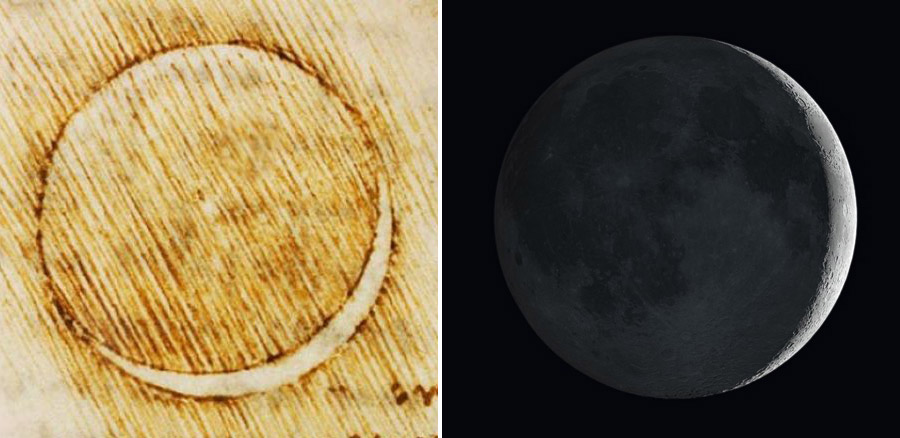“Earthshine” from the Moon shows our planet is dimming, intensifying global warming
Nov 18, 2021
- Earth’s brightness, as seen from space, has dropped significantly over the past two decades.
- When the planet reflects less light, more sunlight reaches the ground and the sea, warming the atmosphere.
- A natural rise in Pacific Ocean temperatures in 2015-2017 made Earth even dimmer by reducing bright clouds over the western Americas, a new study concludes.
For 20 years, researchers stared at the dark side of the moon to measure its faint but visible “earthshine,” a glow created by sunlight reflecting off Earth and onto the lunar surface. Their new analysis, published recently in Geophysical Research Letters, revealed that this ghostly light has darkened slightly, confirming satellite measurements that our planet is getting dimmer.
As the planet reflects less light, the incoming heat gets absorbed by the seas and skies. This lingering warmth probably intensifies the rate of global warming, scientists believe.

Typically, about 30 percent of the light streaming from the sun gets redirected by Earth back to space, mostly from bright white clouds. But that percentage can vary over time. In 1998, a team from the Big Bear Solar Observatory in southern California set out to track Earth’s reflectivity, or albedo, by monitoring earthshine during the days each month the telescope could see the moon’s dark side.
“It is just so naturally appealing,” said lead author Philip Goode, a physicist at the New Jersey Institute of Technology, which operates the observatory. “We’re using the moon as a mirror for the Earth.” The study ran for a full solar cycle—about 20 years—to account for variations in the sun’s activity.

Three years after Goode started Project Earthshine, NASA also began to measure Earth’s albedo with a string of satellites called Clouds and the Earth’s Radiant Energy System, or CERES. Data from both projects has matched up neatly. Since the year 2000, the planet has reflected less energy back into space: about one-half a watt per square meter. That’s similar to the dimming effect from turning off one lightbulb on a panel of 200.
When these experiments began two decades ago, many scientists expected that water in warmer seas would evaporate more quickly and create thicker clouds—thus reflecting more sunlight back into space. But the satellite and earthshine results show just the opposite: “Somehow, the warm ocean burned a hole in the clouds and let in more sunlight,” Goode told Mongabay.

Other researchers analyzing these patterns have pinned the gradual dimming of Earth on human influences. One team at Princeton University managed to model the satellite data with near-perfect accuracy by considering the impacts of pollution, greenhouse gases and sea ice levels.
“This is on us,” said Shiv Priyam Raghuraman, a Ph.D. student who led the Princeton study and was not involved in the Earthshine Project. “We should be aware that we’re driving these changes.”
The earthshine data revealed the planet dimmed noticeably during its final three years of data collection from 2015 to 2017. That pattern may have different roots, Goode noted. “I would have bet my house that those three years were going to look just like the previous 17,” he said. “Now we have this really cool mystery.”
In 2014, a natural climate pattern in the Pacific Ocean called the Pacific Decadal Oscillation caused temperatures to rise quickly. Warmer seas meant sparser low-level clouds, which let in even more sunlight, as confirmed by the satellite data.

Whether natural or human-induced, the measured cloud reduction exposes Earth to more heating from the sun. This small boost in radiation “manifests as many different symptoms, from temperatures rising to droughts, heat waves and sea level rise—what we see as climate change,” Raghuraman said.
After a long career advancing the field of solar physics, Goode said he’s gratified by the Earthshine Project, which will continue to study the dark side of the moon under new leadership.
“It was an adventure that we didn’t expect,” Goode said, “and it was a lot of fun.”
Citations:
- Goode, P. R., Pallé, E., Shoumko, A., Shoumko, S., Montañes-Rodriguez, P., & Koonin, S. E. (2021). Earth’s albedo 1998–2017 as measured from earthshine. Geophysical Research Letters, 48, e2021GL094888. https://doi.org/10.1029/2021GL094888
- Raghuraman, S.P., Paynter, D. & Ramaswamy, V. Anthropogenic forcing and response yield observed positive trend in Earth’s energy imbalance. Nature Communications 12, 4577 (2021). https://doi.org/10.1038/s41467-021-24544-4
Zack Savitsky (@savagitsky) is a graduate student in the Science Communication Program at the University of California, Santa Cruz. Other Mongabay stories produced by UCSC students can be found here.